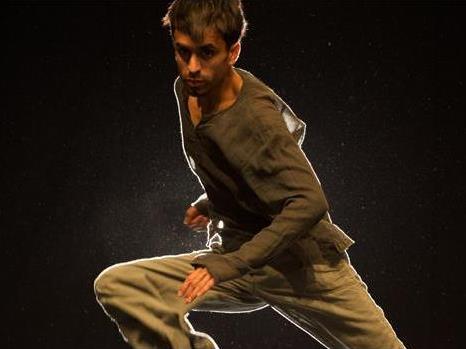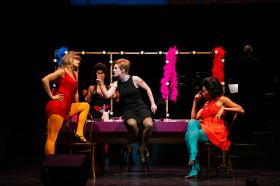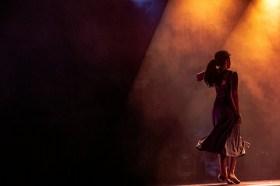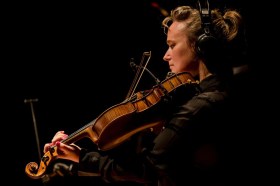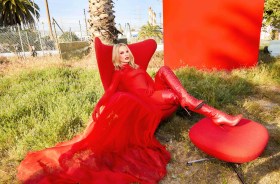Aakash Odedra is one of the major up and coming – if not already stellar – younger Kathak/contemporary dancer-choreographers in the UK, following in the footsteps of his mentor, Akram Khan. Direct from the Brisbane Festival, Rising was presented in Sydney for two performances only as part of Parramasala.
Regarded as a rising star of the international dance scene, Odedra spent 2011 working with internationally acclaimed choreographers Sidi Larbi Cherkaoui, Khan and Russell Maliphant, who each created a short solo for this show, which also features a solo created by Odedra himself. All draw on Odedra’s extensive training in the Indian styles of Kathak and Bharatanatyam, blended with ‘contemporary’ dance forms in a mesmerizing, bravura display.
The opening work, Nritta, is choreographed by Odedra himself. It begins with dramatic lighting and swirls of dry ice. Odedra has his back to us. Tall and thin, he wears a dark blue/greyish suit and has large expressive eyes. Musically the work has an insistent Kathak beat, and choreographically this particular solo is the most classically Kathak-based. Odedra has a very erect regal bearing but very flexible torso and arms. In one section Odedra performs the very fast rhythmic Kathak footwork and beats but with no ankle bells. Martial arts and whirling movements are included as well as difficult turns on the knees, and startling, flashing, gazelle-like leaps and bounds. Odedra is like an elegant liquid sculpture transfixing us in his gaze.
In total contrast was The Shadow of Man, choreographed by Akram Khan. Far more abstract, in this work Odedra is topless, in grey tracksuit pants. It begins with a primal scream. Again there is dramatic, moody lighting which here emphasises the isolated use of the shoulders in the first section – they seem almost dislocated, possibly broken wings – as Odedra slowly, painfully rises from his hunched position. Angular, irregular gestures and strange simian movements are also included in this sombre, rather tormented piece, as well as sliding floorwork and whirling arms. The pulsating lights add to the eerie atmosphere.
After interval came Cut, choreographed by Russell Maliphant and opening with a crash of cymbals and then the sound of waves against the shore as part of the pulsating electronic soundtrack. It again showcased Odedra’s graceful fluidity. There was a blurring of light and movement, sinuous rippling and some birdlike movements. A lot of the work was focused on just a tiny strip of light, atmospheric drifting dry ice and Odedra’s floating hands; a raised hand apparently beckoning us. Towards the end there is a ‘staircase’ of light, whirling turns with arms outstretched and strobe like lighting.The final work was Sidi Larbi Cherkaoui’s Constellation, which had Odedra floating dreamlike amongst light globes. He catches one and it glows and pulses as do the other lights, to various degrees and hypnotic effect.
Four solos of various moods and styles that showcase Odedra’s astonishing, breathtaking talent , his rippling grace and power. The spontaneous standing ovation at the end was richly deserved.
Rating: 4 ½ stars out of 5
RisingAakash Odedra Company
Running time: one hour 15 mins (approx) including interval
Nritta
Choreography and music arranged by Aakash Odedra
In the Shadow of Man
Choreography: Akram Khan
Lighting: Michael Hulls
Music: Jocelyn Pook
Cut
Choreography: Russell Maliphant
Lighting: Michael Hulls
Music: Andy Cowton
Constellation
Choreography: Sidi Larbi Cherkaoui
Lighting: Willy Cessa
Music: Olga Wojcieowska
Lennox Theatre, Parramatta Riverside
5-6 October

